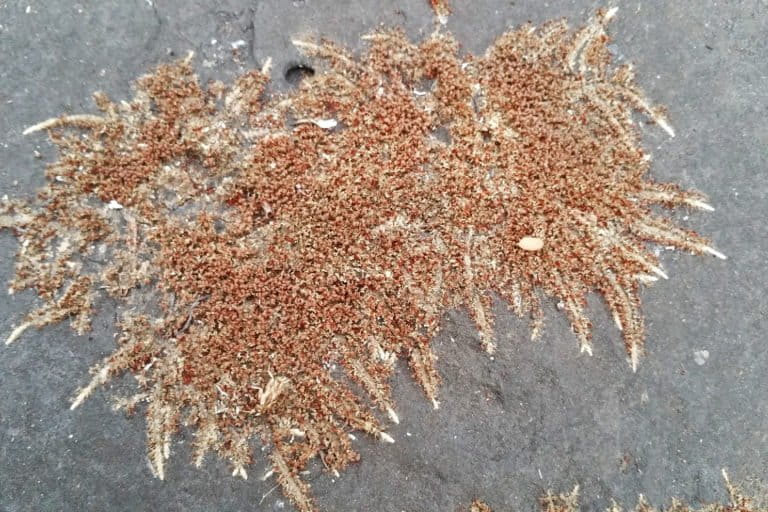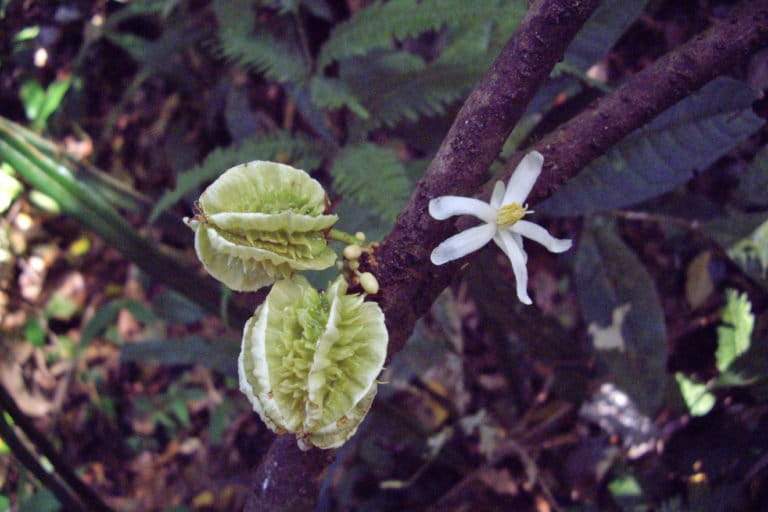- The U.K.’s Kew Gardens does far more than preserve and display 50,000 living and 7 million preserved specimens of the world’s plants; it also educates the public about the importance of plant conservation via its famous London facility.
- In 2022, Kew Gardens identified 90 plants and 24 fungi completely new to science. They include the world’s largest giant water lily, with leaves more than 3 meters across, from Bolivia; and a 15-meter tree from Central America, named after the murdered Honduran environmental activist Berta Cáceres.
- The institution is working actively with local partners in many parts of the world, and especially in the tropics, to save these species in-situ, that is, where they were found. When Kew can’t do this, it saves seeds in its herbarium, carrying out ex-situ conservation.
- Kew researchers, along with scientists from tropical nations, are also working together to ensure that local communities benefit from this conservation work. The intention is to save these threatened plants for the long term, helping slow the pace of Earth’s current extinction crisis — the only one caused by humans.
KEW GARDENS, U.K. — There have been five known mass extinctions in Earth’s history. Today, most scientists agree we are in the midst of the sixth.
“Species are going extinct at an unprecedented rate,” attests Meryl Westlake, senior digital content manager at Britain’s Kew Gardens, “with some estimates that we are [now] losing 135 plants, animals and insects every day, compared with the baseline extinction rate — the rate … before humans had a big impact on the planet — of 1-5 species every year.”
Humankind, being the driving force behind this rapidly escalating extinction crisis, may have a chance of halting it, or at least slowing it down, at least in theory and hopefully in practice.
Which is where the U.K.’s Royal Botanic Gardens, popularly known as Kew Gardens, enters the picture.
While the London-based internationally renowned botanical research institute is best known for its vast collection of tropical plants kept under glass against the U.K’s harsh climate since 1840, today its researchers are working with partners around the globe in a race to slow the pace of extinction. Mongabay went to London at the start of 2023 to see how the effort is progressing.

Identifying and saving the world’s at-risk plants
Saving threatened plant species is critically important, not only for individual species, but because the extinction of a single plant can lead to a cascade of extinctions, wiping out organisms that are associated with and rely on them, including, for example the animals depending on threatened plants for food.
Kew plant taxonomist Martin Cheek describes two primary approaches to saving threatened plants: ex-situ conservation (the preservation of a species away from the habitat where it’s found), and in-situ-conservation (conservation within its habitat, accompanied by the protection of species that pollinate and disperse it, along with its mycorrhizae — the symbiotic association of a fungus with the plant roots).
While ex-situ conservation, for which Kew Gardens is most famous, is highly valuable, that approach has its problems. It is expensive and can fail to provide lasting solutions. Collections stored in one place can be destroyed, as when a paperwork error caused irreplaceable plant specimens to be incinerated in Australia in 2017, or when the severe economic crisis in Venezuela resulted in the degradation of its national botanical garden, a priceless UNESCO World Heritage Site.
Nor is ex-situ preservation suitable for all species: “Not all seed species are seed-bankable,” Cheek told Mongabay. “And, even some of those you can dry and put in a seed bank, can die after five or six years.” Cryopreservation, the freezing of a plant, can provide one answer, but, says Cheek, it’s challenging to deliver.
In-situ conservation is more effective, particularly if local conditions can be modified to diminish species threat. “This is our Plan A,” says Kew Gardens senior botanist Iain Darbyshire. Kew is working with Plantlife International and with local communities worldwide to locate crucial habitats boasting concentrations of rare, threatened, and useful plants species. Once located, the hard work of in-situ conservation begins.
“This approach has been very successful in the temperate zones — Europe, Japan and even some North African countries,” Darbyshire says. But in-situ work has proved more difficult in the tropics, so that’s where Kew has targeted its initiatives in recent years.
“We started [our in-situ tropical work] in seven countries or areas, some quite small, where we already had strong partnerships,” he says. “In Africa, we are now working in four countries — the Republic of Guinea, Cameroon, Mozambique and Uganda.” More recently, Sierra Leone and Ethiopia were added to the list; eight Ethiopian and three Sierra Leonian scientists are currently in London to strengthen the partnership.


Saving species new to science
One exciting consequence of this global in-situ work is that Kew and its partners are regularly discovering many species new to science. They registered 114 unknown species in 2022 alone: 90 plants and 24 fungi.
These aren’t necessarily small, unassuming plant world residents. One new find last year was the world’s largest giant waterlily, Victoria boliviana, with leaves that can stretch 3.3 meters (10.8 feet) across the surface of the water and support the weight of a small child. And this remarkable species was hiding in plain sight!
A dried specimen of this species existed in Kew’s herbarium for more than 170 years, along with a drawing. But only recently did Kew horticulturist Carlos Magdalena and botanical artist Lucy Smith spot it as being distinct from the other two species of giant waterlily. They were also thrilled to discover that V. boliviana, now known to be the biggest of the three species, is still growing wild in Bolivia.
Other newly identified species include Carpotroche caceresiae, named to honor the bravery and sacrifice of Berta Cáceres Flores, a Honduran Indigenous activist murdered in 2016; Sternbergia mishustinii, the Turkish “winter daffodil,” believed to have anti-inflammatory and antioxidant properties; and Gomphostemma phetchaburiense, a plant found living in a cave entrance in an unprotected area of Thailand.

Growing national and local partnerships
The unique useful properties of some of these new species as food and medicine has attracted considerable public interest, highlighting the need to conserve them, in-situ if possible. Guinea and Mozambique are the countries where Kew has achieved the most so far. Jo Osborne, program officer for Southern Africa at the Millennium Seed Bank Partnership, said that, thanks to local assistance, they’ve identified 57 sites in Mozambique where threatened plant species occur most frequently. In Guinea they found 22 sites.
At times, conserving these sites is not as daunting a task as conservationists first feared. “In Mozambique, we found that, if less than 3{47b453017e945efa530f5a0970507fdb946b2530ae0a03634d0aa42ba42c4637} of the total land area can be protected, over 80{47b453017e945efa530f5a0970507fdb946b2530ae0a03634d0aa42ba42c4637} of the threatened plant species can be saved,” Osborne said.
But, in some circumstances, in-situ conservation has proved impossible. Cheek and his Guinean partners recently identified the orchid of the falls, Saxicolella deniseae, a species only described after its extinction. The plant only grew at the top of waterfalls and offered a good example of how species adapt to thrive in very specific conditions.
Found only on the Konkouré River, S. deniseae points to a daunting conundrum faced again and again by humanity: In Guinea, the challenge of providing energy and combating climate change ran up hard against the desire to preserve the country’s biodiversity. In this case, the plant’s successful niche adaptation of growing only atop waterfalls doomed it because waterfalls are drastically changed when dams are built.
The orchid of the falls “probably met its end when the region was flooded for the development of a dam,” Cheek explained. “These dams are seen as a source of green energy, so they are hard to argue against. But they can, and do, lead to global extinctions of plant species.”
But sometimes, if an area occupied by rare plants has been identified in time, a compromise is possible. “To my surprise, we’ve been contacted [in Guinea] by consultancy companies that advise developers, like mining companies. And they’re saying they’re planning to reroute their power line or road around our important plant areas,” says Cheek. “They’re concerned, we think, [due to] the impact on their reputation if they’re seen to be destroying the last remaining plants of a threatened species.”


The path to protection
Once key geographical areas with threatened plants are identified, habitat needs to be permanently protected. Here, Darbyshire says, the role of local partners is crucial. “We can provide the science as to why these sites are important, but it requires advocacy within the country to get these sites conserved.”
One of the Ethiopian scientists currently working at Kew, Ermias Lulekal, an associate professor at Addis Ababa University, explains the strategy for winning local support. “We did a review of Ethiopian wild plants and found that more than 400 are edible,” he said. “So, conserving the areas where they grow also means conserving the local communities’ food supply. Many of these plants are also medicinal, and 80{47b453017e945efa530f5a0970507fdb946b2530ae0a03634d0aa42ba42c4637} of communities rely on traditional medicine. So conservation also has a health benefit.”
One important step is to design buffer zones around rare plant core areas: “In Guinea, we’re paying locals to collect seeds of threatened species and then create nurseries to raise seedlings,” explained Cheek. “Our local partners plant these seedlings, along with other useful species selected by the local communities, around the protected area. The trees [that grow up] provide an income, and local people feel motivated to protect the area.”
Some enthusiastic local responses are unexpected: “Elders are saying that ‘we’ve heard that you’ve found this [threatened] plant that only grows in our area and we’d like to see it and incorporate it into our culture,’” Cheek told Mongabay.

Endorsement from an African scientist, particularly one from Ethiopia, can be an all-important conservation tool, Cheek says. “Ethiopia has a leadership role in Africa, [because it is] seen as the only country that wasn’t colonized. I was on a trip to Cameroon, where I was doing a survey in villages with some leading Ethiopian scientists,” said Cheek. “The local leaders were really interested in what the Ethiopians had to say. It was one thing for us as white people, saying something, but when our Ethiopian colleagues said it, they were really listened to, and believed.”
One of Kew’s roles in the partnership is capacity building. Ethiopia has 476 known endemic plant species and the country needs to discover which ones are threatened. In pursuit of that goal, the eight Ethiopian scientists now at Kew are learning to “red list” them, identifying a plant’s risk of extinction using the guidelines developed by the IUCN, the global species conservation authority. When ready, Ethiopia can create its own red list.
Ethiopia suffers from “population pressure, drought, agricultural encroachment and so on. Most of our endemic plants are threatened [as a result],” explained Lulekal. “We have to identify the areas under pressure and an essential first step is to red list species and Kew is training us in this. We have greatly benefited and are really lucky to have this collaboration.”

Kew Garden redefines itself
The work in Ethiopia and other Kew collaborations around the globe demonstrate just how much the botanical garden has changed its mission since its founding in 1840.
An emblematic illustration of its original role in enriching the British Empire is the one Kew played in the decline of the natural rubber trade in the Amazon region. In 1876, a British explorer, Henry Wickham, took 70,000 rubber tree seeds out of Brazil’s rainforest to Kew Gardens. In England, horticulturalists propagated seedlings eventually used to create rubber plantations in Southeast Asia, particularly Ceylon (now Sri Lanka) and British Malaya (now Malaysia), both then part of the British Empire. Rubber was produced far more efficiently in these new Asian plantations than in the Amazon, so the market for South American rubber collapsed spectacularly. In contrast, it boomed in Southeast Asia. In 1920, Wickham was knighted for his “services to the rubber plantation in the Far East.”
Today, researchers recognize how the spread of these and other types of plantations around the globe contribute to deforestation and biodiversity loss.
With the heyday of the British Empire long past, Kew’s role has been drastically altered. Today’s its mission statement proclaims a new aspiration: to help “end the extinction crisis and help create a world where nature is protected, valued and managed sustainably.” Kew’s work with threatened species, in partnership with scientists from tropical nations, and with traditional communities, is a step toward achieving this ambitious goal.
Study suggests tropical forests can regenerate naturally — if we let them
FEEDBACK: Use this form to send a message to the author of this post. If you want to post a public comment, you can do that at the bottom of the page.
